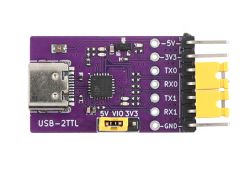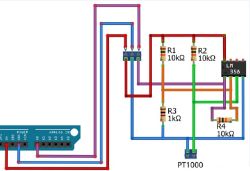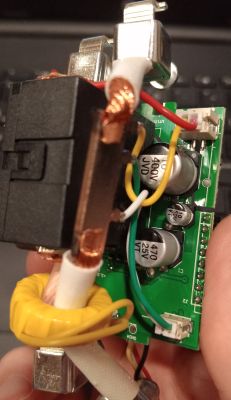Hello,
I have a device whose heart is an STM32 microcontroller. I would like, in the first phase, to be able to view the operating status of the device via the internet (website, application on tel), and in the next phase to control this device.
I have equipped the device with ESP8266 and even managed to write from the microcontroller via ESP8266 the values of the variables to a file on the server with a GET request, according to:
.
However, I'm not sure if this is the best solution. Shouldn't I use something "more professional" such as a raspberry for the web communication?
The functionality of the device will be developed quite a bit, so there will be quite a lot of data to transfer as well (say the state of 50 variables).
The next step would be to make more devices, and allow the web application to identify which device you want to communicate with (in total you can distinguish between devices via a serial number variable).
Then it would be nice to be able to update the FLASH memory on the STM32.
I would also add that I don't want to use any peripherals in the ESP other than the UART - to communicate with the main microcontroller. All main functions are performed by the main STM32 microcontroller.
Is the ESP8266 an apt choice for the purposes mentioned? .
If the ESP can meet my expectations, would the AT commands that the factory firmware in the ESP is equipped with be sufficient. Or should I prepare my own firmware in order to have more control over the system, using the Arduino or NodeMCU environment?
I have a device whose heart is an STM32 microcontroller. I would like, in the first phase, to be able to view the operating status of the device via the internet (website, application on tel), and in the next phase to control this device.
I have equipped the device with ESP8266 and even managed to write from the microcontroller via ESP8266 the values of the variables to a file on the server with a GET request, according to:
However, I'm not sure if this is the best solution. Shouldn't I use something "more professional" such as a raspberry for the web communication?
The functionality of the device will be developed quite a bit, so there will be quite a lot of data to transfer as well (say the state of 50 variables).
The next step would be to make more devices, and allow the web application to identify which device you want to communicate with (in total you can distinguish between devices via a serial number variable).
Then it would be nice to be able to update the FLASH memory on the STM32.
I would also add that I don't want to use any peripherals in the ESP other than the UART - to communicate with the main microcontroller. All main functions are performed by the main STM32 microcontroller.
Is the ESP8266 an apt choice for the purposes mentioned? .
If the ESP can meet my expectations, would the AT commands that the factory firmware in the ESP is equipped with be sufficient. Or should I prepare my own firmware in order to have more control over the system, using the Arduino or NodeMCU environment?





